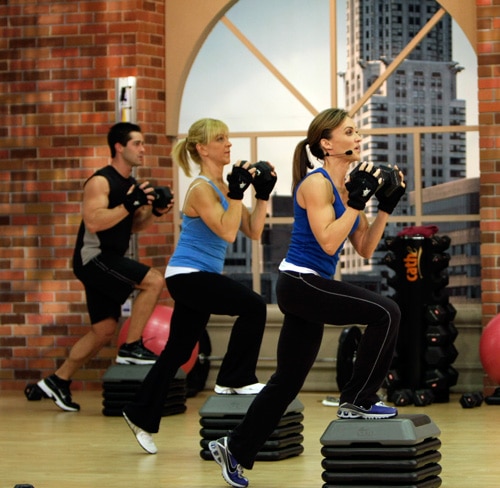
Contrast Training and Post-Activation Potentiation
Contrast training is based on a concept called post-activation potentiation. This simply means your nervous system is maximally “primed” to generate force after you’ve just completed a heavy resistance exercise. This period of potentiation, where your muscles are capable of generating more force, lasts anywhere from a few minutes up to 30 minutes after completing a resistance exercise. When you follow a heavy resistance set with a complimentary explosive exercise that mimics the movement you did during the resistance exercise, your nervous responds by recruiting more motor units. Plus, your nervous system better synchronizes those units while putting the brake on muscle inhibition that keeps you from generating maximal force. Because you’re recruiting more motor units and muscle fibers, this gives you the potential for greater gains in strength, power, and hypertrophy than you would get through resistance training alone. This type of training is similar to what we did in our STS Plyo Legs video.
How Do You Put Contrast Training into Practice?
How do you get the benefits of contrast training? Do a resistance exercise to fatigue followed by an explosive exercise. For example, a set of squats followed by squat jumps. With the squats, you’re fatiguing the muscles and then taking advantage of post-activation potentiation so you can recruit more muscle fibers for the squat jumps that follow. By doing this, you’re activating and fatiguing “high-threshold” motor units you wouldn’t normally have recruited from doing only squats. This gives you the potential to build more mass and improve your performance in sports and activities that require explosive power.
You can use contrast training to target muscles in your upper or lower body. The key is to choose a complementary explosive exercise that mimics the movements of the resistance set. Some contrast training pairs might include:
- Chest press followed by plyometric push-ups
- Deadlifts followed by broad jumps
- Lunges followed by plyometric scissor lunges
- Squats followed by squat jumps
How long should you rest between the two exercises in a contrast set? Post-activation potentiation lasts from several minutes to 35 minutes. Most people rest anywhere from 30 seconds up to 3 minutes before doing the second exercise. Keep in mind that shorter rest periods will give more of a metabolic effect as well as burn more fat. If you make the rest period too short, the fatigue factor may be so great so that you don’t get the full effects of post-activation potentiation.
To maximally work your muscles during the resistance set, use a heavy weight (80 to 85% of one-rep max), but limit the number of reps to 3 to 5 to avoid overriding the post-activation potentiation effect. Then do 5 or 6 reps of the explosive move. Rest three minutes before repeating the two contrast exercises a few more times.
The Bottom Line?
Contrast training is a way to build strength and power in a single workout and recruit additional, high-threshold muscle fibers to build strength and lean body mass. It’s also a good way to train if you play a sport that requires explosive movements. Reached a plateau? Contrast training is a way to restart muscle growth by giving your muscles a novel stimulus. Plus, it’ll add variety to your routine. Don’t overdo it – it’s a challenging way to work out. Give yourself a few days of rest between contrast training sessions.
References:
Journal of Strength and Conditioning Research. 17(4), 671-677.
Int J Sports Phys Ther. 2011 September; 6(3): 234–240.
On Fitness September/October 2013. Page 65.
Related Articles By Cathe:
Complex Training for Building Muscle Strength and Power

